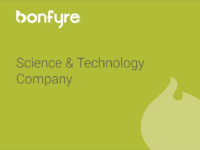Jennifer LePage is a seasoned professional in the field of Learning and Development and currently serves as the Director of Learning and Development at Stephenson’s Rental Services in Toronto, Canada. With a wealth of experience collaborating with diverse teams, Jennifer has a proven track record of spearheading successful training initiatives, ranging from individual self-access courses to expansive e-universities and dynamic live conferences. Her passion lies in translating theoretical concepts into practical, measurable outcomes, fostering growth both for individuals and organizations alike. Armed with specialties in LMS consulting, learning technology design, instructional design, and training needs analysis, Jennifer is dedicated to empowering people, facilitating company expansion, and nurturing vibrant learning communities.
Can you tell us about your background and how you found your way into Learning and Development (L&D)?
I started my career as an English as a Second Language teacher, but my journey into education took a fascinating turn with technology. After assisting in building a language lab at Seneca College in Toronto, I fell in love with e-learning. Since then, I’ve been deeply involved in instructional design and corporate education. Interestingly, I’ve had the opportunity to work across various industries, from colleges to the Canadian Armed Forces, realizing that despite the differences, everyone shares common learning challenges and fascinations.
How do you approach engaging learners and ensuring effective learning outcomes?
My approach to engaging learners is deeply rooted in applied social psychology. I use many more tools from social psychology than education in instruction given to primary school teachers. I seek to really know who the learning is designed for. What are they afraid of? What do they get yelled at for? What do they have complaints for? The more you know about them, the more you can defend them from the subject matter expert who has an opinion.
“Understanding learners’ fears, frustrations, and aspirations is crucial.”
I’m also a huge fan of empathy maps, which delve into learners’ environments and thoughts. By knowing our learners on a deeper level, we can craft learning experiences that resonate with their individual contexts and effectively draw them into the topic. People have to want to learn topics themselves and know that what they are learning connects them to a bigger goal.
Could you share some insights into how you integrate technology into your learning solutions?
We have multiple distinct groups of employees at Stephenson’s, including stores, sales, heavy equipment technicians, a driver fleet and more. Technology plays a vital role in our learning solutions, but practicality and relevance are paramount. We use a diverse tech stack, including a Learning Management System (LMS) tied to our health and safety environment.
Despite the sophistication of the equipment we work with daily, internally, we’re mindful that our audience prefers hands-on learning experiences. We leverage technology to facilitate face-to-face interactions and practical applications, ensuring that our courses align with our learners’ preferences and needs. These are people who are incredibly bright and resourceful and need to do things with their hands.
What measures do you take to assess the success of your learning initiatives?
We employ various methods to measure the success of our learning initiatives. From standard feedback mechanisms to practical testing and certification programs, we ensure that our learners not only acquire knowledge but also demonstrate practical skills.
“We also emphasize continuous improvement, adapting our approaches based on feedback and industry trends.”
Related to impact and measurement, I am personally not a huge fan of microlearning. I don’t think microlearning in its traditionally described way (‘you can learn a new skill in 5 minutes’) can achieve lasting results. You need practical opportunities to practice.
For example, we have some e-learning in the field where we videotaped experts doing a thorough pre-trip inspection on a variety of vehicles we use to deliver heavy mobile construction equipment. We share the video along with interactive elements within the e-learning – they complete some things and then answer some questions. We send that completion to their supervisor and ask them to confirm if the task was done correctly after a couple of weeks. If it isn’t, we ask the supervisor to coach, guide and revise the training to address any issues.
Can you elaborate on your approach to employee engagement and talent management?
Employee engagement is crucial, and we are working toward implementing formal surveys. For now, though, we prioritize staying connected with our employees and conducting extensive exit interviews and stay interviews. We reward problem-solving and offer targeted training, such as 101 classes and leadership development programs, tailored to our employees’ needs and aspirations as well as the organization’s requirements for retention and business development.
How do you see the future of Learning and Development, especially in light of emerging technologies?
The future of Learning and Development is exciting, with emerging technologies like AI offering new opportunities for personalized learning experiences. However, it’s essential to strike a balance between leveraging technology and preserving human expertise.
“As we continue to innovate, our focus remains on making learning accessible, engaging, and effective for our diverse audience.”
In essence, our approach to Learning and Development is deeply rooted in understanding our learners, leveraging technology effectively, and adapting to the evolving needs of our organization and industry.



 6 min
6 min




